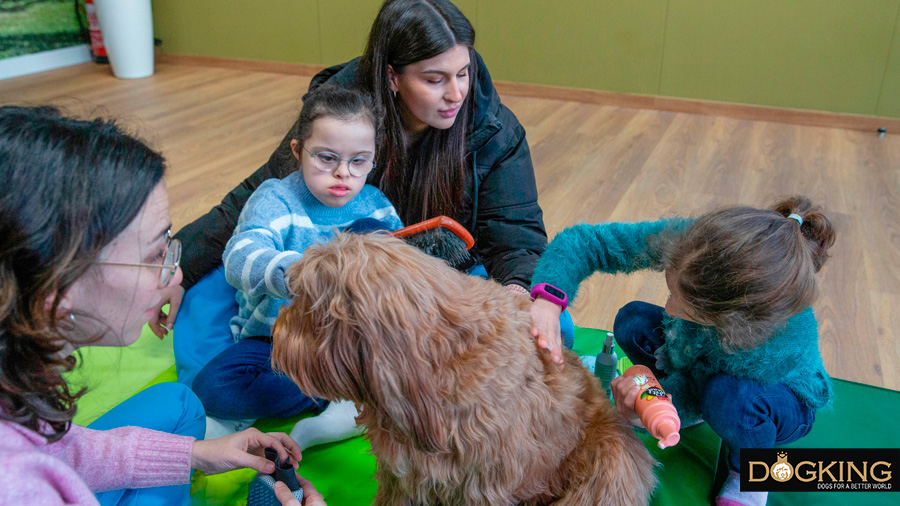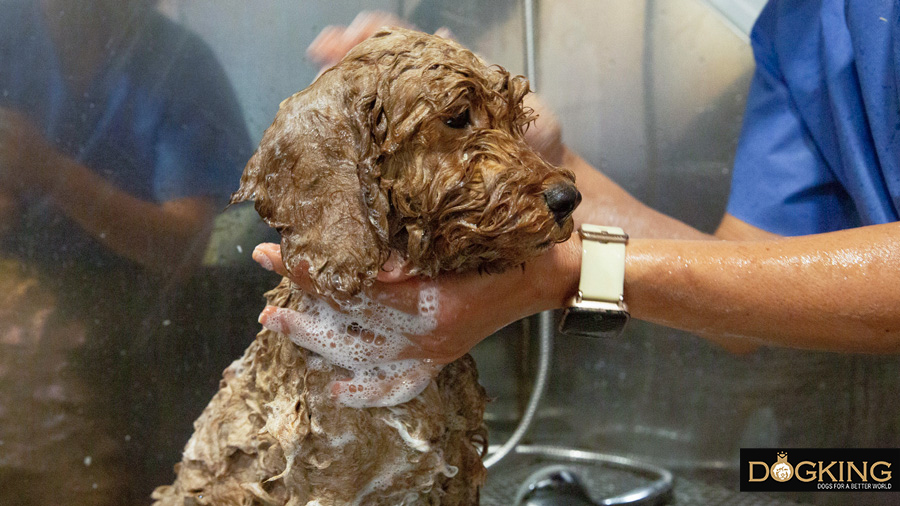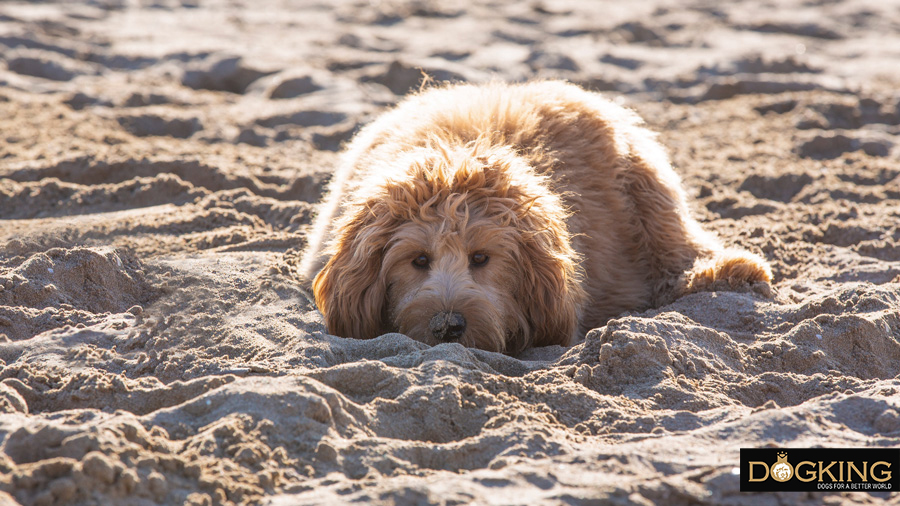How often should I bathe my dog?
The number of baths for your dog depends on several factors

THE IDEAL BATHING FREQUENCY
Reading time about 10 minutes
How often a dog should be bathed is one of the most common questions in the animal world. The truth is that there is no specific answer, but several factors will determine whether this hygienic care should be given more or less frequently to your dog. In the following article we will tell you everything in detail.
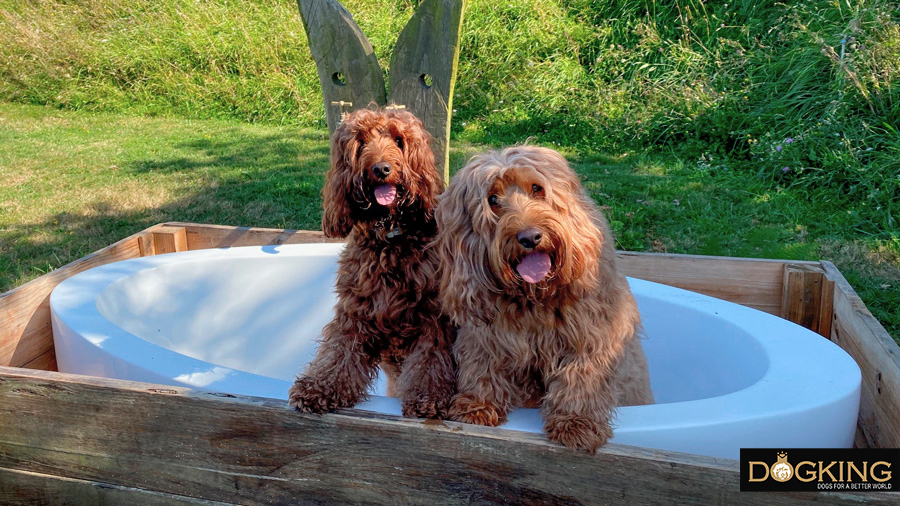
Table of contents
1- Why is it necessary to bathe your dog?
2- How to prevent your dog's bathing from being unhealthy
3- Determining the frequency of dog's bathing: what are the factors involved?
4- Bathing of our therapy dogs
Why is it necessary to bathe your dog?
Hygiene is among the basic needs to be met for your furry friend, just like food, hydration, and socialization. Not bathing your dog may bring health risks to your dog and your family, due to the threat of parasites such as ticks or to the appearance of skin diseases. What's more, if your dog already suffers from pathologies such as dermatitis, hygiene will become stricter, so it is important that the number of baths is neither excessive nor insufficient.
As well as being essential for our dog's physical well-being, bathing may also allow us to improve its mental health. This should be a time of enjoyment and tranquillity and it should be seen as something positive. In addition, if we don't take good care of its coat constantly and properly, the creation of annoying knots or a bad smell may cause the dog not only to see alterations in its body that lead to discomfort, but it may also feel rejected by others. Bathing your dog with an ideal and personalized recurrence will mean that you won't need to use more force when brushing it, thus preventing it from seeing the experience as a punishment rather than a desirable sign of care.
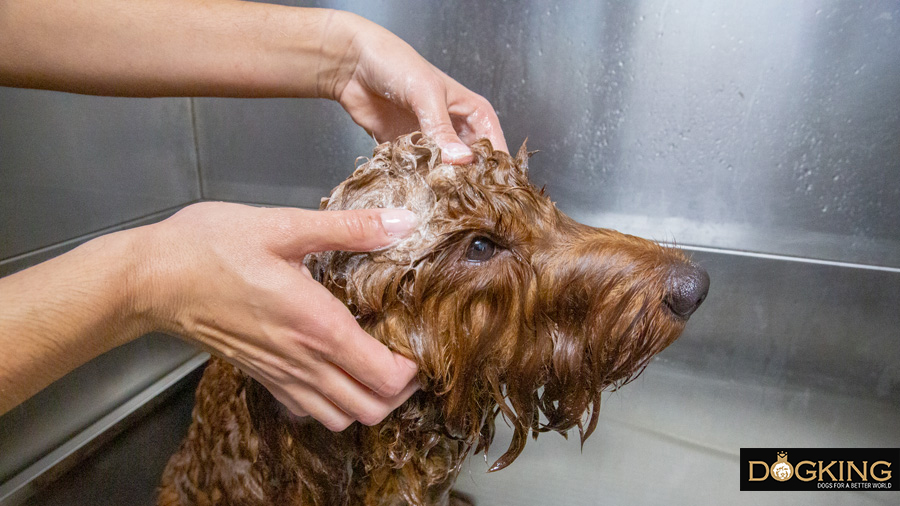
How to prevent your dog's bathing from being unhealthy
Risks of bathing your dog with unsuitable products
Submitting a dog to bathing with unsuitable shampoos could even carry certain risks that affect its well-being worsening the quality of its hair. This is because the coat needs natural oils that give shine and organically hydrate its skin, running the risk of altering them in case of a wrong hygiene.
Especially if non-specific products are used or if they aren't suitable to its coat or skin type, bathing can cause flaking, irritation and itching, leaving it exposed to multiple skin problems. There is a need for balance and personalized treatment.
When should we NOT bathe our dog?
It is important to check your dog's state of health, as it may be harmful to bathe it even if it seems to need it. If we suspect that our dog may be suffering from a cold, fever, cough, digestive discomfort or has recently undergone surgery, follow your vet's instructions as this could worsen its condition.
Determining the frequency of dog's bathing: what are the factors involved?
Dog age
The skin and coat of an adult dog isn't the same as that of a puppy. And although the frequency of bathing with the right shampoo may be done weekly in both cases, we must take special care with the little ones with the temperature of the water, and the correct use and choice of shampoo.
Australian Cobberdog puppy's first bath
At DOGKING we start bathing our adorable puppies in their fourth week of life, when the mother stops licking her pups and so they begin to socialize with bathing from an early age. It is equally important that they get used to moments like bathing from an early age and become familiar with everything that the experience implies, such as providing them with the necessary protective measures. That is why in our center, as long as no puppy runs the risk of seeing its development affected, we have top quality products and professionals in the field of canine health and grooming. All this allows us to take advantage of the stage in which they learn most about the outside world to normalize hygiene routines in a safe way, thus promoting good future behaviour without affecting their growth or physical condition.
Breed
Breed is a factor which influences all of the above. It will dictate its temperament, lifestyle, coat type and the predisposition to skin conditions as a general rule. Herding dogs such as Border Collies, for example, are more likely to get dirty as they need natural environments where they may expend their energy. If you live with an Australian Cobberdog, its friendly and affectionate temperament will make it become part of the family, so we recommend that it has a proper hygiene to enjoy it to the fullest.
Coat type
Depending on your dog's coat type, it is best to go to the groomer once a month from the time they are puppies, as part of the routines that we should be carried out at home. In this way they will be able to have optimal hygiene, cut and care, and at the same time be familiarized with experiences that will be present in all stages of their life.
Lifestyle
It is common for dogs that perform more physical activity to require more frequent cleaning than those that spend most of their time indoors. Elements such as mud or vegetation, common in rural areas, may also make a dog generally more prone to getting dirty than in urban environments. But while bathing may seem like the solution every time your dog gets dirty, it may not always be, as too much hygiene could put the quality and health of your dog's skin and hair at risk. The real solution then is to assess if its lifestyle really meets its needs, and if exposing it to dirty or smelly environments continuously is the most convenient for it, as bathing may not be done with the same frequency.
Time of the year
In the spring and summer seasons, if you live near the coast, it is very important to bathe your dog at home with a shampoo and a suitable balm to remove the sand and salt, and even if it isn't cold, it is important to dry your dog well with the hair dryer to ensure that it doesn't get any dermatitis due to excess moisture.
Specific conditions
Before applying the advice generally given in the canine world, it is worth considering whether your dog has any dermatological needs or if its coat requires any specific care. It may suffer from dermatitis or have a predisposition to it, or if you have a breed that sheds its coat, it is advisable to seek professional advice on whether or not it is convenient to wash your dog at a certain time of the year or its frequency.
Bathing of our therapy dogs
Australian Cobberdogs, being such a versatile breed whose lifestyle may be diverse and who don't shed their coat, don't require a specific number of baths to be carried out. However, in order to guarantee the safety of the patients they assist without sacrificing the health of their coat and skin, at DOGKING we may guarantee that they are bathed weekly with top quality products that don't dry out or dehydrate, but quite the opposite, so that they allow to maintain all the shine and softness of the majestic coat that characterizes them. Safety must always come first, both for the users by guaranteeing correct hygiene measures, and for our beloved furry friends by always giving them the best for their physical and mental well-being.
